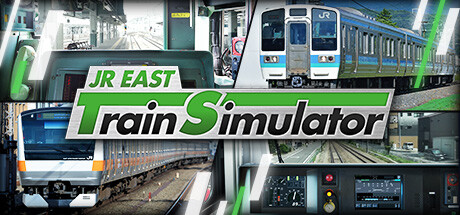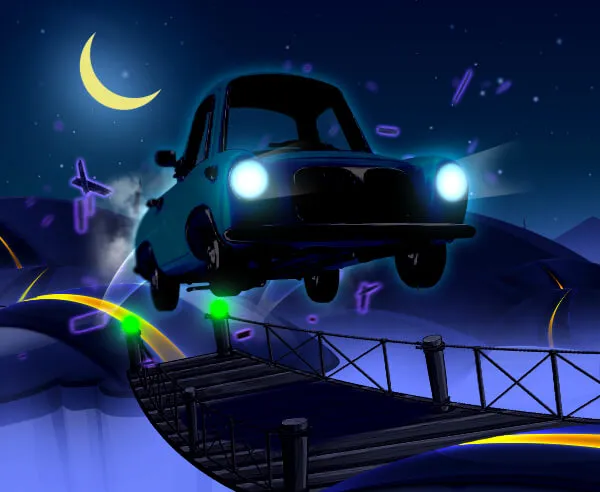What is JR EAST Train Simulator?
JR EAST Train Simulator is a realistic, first-person train driving simulation that offers an authentic experience of operating trains on Japan's East Japan Railway Company (JR East) lines. Unlike conventional simulators that rely on 3D graphics, this game utilizes **high-definition, live-action video footage** taken from the driver's cab of actual trains.
The simulator is based on the professional training software used by real JR East drivers, ensuring high fidelity in the physics, signaling systems (like ATS), and instrument panel displays. The goal is to drive accurately, adhere to strict Japanese railway signaling and speed limits, and master precision braking for station stops.
How to Play JR EAST Train Simulator?
The game requires precise operation of the train's controls and constant vigilance over speed limits and signaling confirmations.
Mastering the Controls
The primary controls involve the **master controller** (combining acceleration/power and braking). You must smoothly apply power to reach the required speed limit for the section of track. Braking is done incrementally, often in multiple steps, to ensure a comfortable and precise stop. The control console reflects the realistic instrument panel of the specific train model you are driving.
Precision Braking at Stations
A core challenge is achieving precise stops. A visual marker (often a moving diamond shape relative to a green bar) appears on the screen, indicating the train's position relative to the designated stopping point on the platform. You must carefully manage the braking force to stop the train accurately at this exact spot to avoid penalties.
Signaling and Safety Systems (ATS)
Japanese rail lines use complex signaling systems. Players must constantly monitor signals and speed limit displays. When the train passes a warning signal (indicated by a bell), the driver must quickly press the **ATS confirmation button** within a short time limit (usually 5 seconds). Failure to confirm or exceeding speed limits will automatically trigger the emergency brakes, resulting in mission failure or penalties.
Frequently Asked Questions (FAQ) of JR EAST Train Simulator
Is this simulator used by real JR East drivers?
Yes, the game is based on the professional train driving simulator software used by JR East for driver training, ensuring a high level of technical realism.
Why does the game use live-action video instead of 3D graphics?
The use of live-action video (often referred to as FMV, Full Motion Video) provides an unmatched level of visual authenticity, capturing the real-world environment and trackside details of the actual Japanese railway lines.
Can I look around the cabin or outside the windows?
Typically, the game is restricted to the driver's forward perspective (the video footage). Unlike 3D simulators, it does not offer a free-look option to view the cab or the environment from different angles.
Is there a scoring or grading system for my driving?
While the simulator focuses heavily on realism, it does include implicit feedback based on your performance, especially regarding signal compliance, speed adherence, and the accuracy of your station stops.
How is the realistic sound achieved?
The game uses authentic sound recordings captured directly from the actual trains and tracks, providing a highly realistic audio experience that reflects real-world operation.
What is the most common reason for failure in a run?
The most common reasons are overshooting the station's designated stop position, exceeding the posted speed limits, or failing to acknowledge the ATS (Automatic Train Stop) signal within the required time.
Can I drive in adverse weather conditions like rain or snow?
Since the simulator uses pre-recorded video, the weather and time of day are fixed based on when the original footage was filmed. Dynamic weather is not a feature.
Are the routes included in the base game?
The core game typically includes one or two specific routes and train models. Additional lines and different trains are usually sold as separate DLC (Downloadable Content).
What is "economic operation"?
Economic operation involves managing the power (acceleration) and coasting phases efficiently to conserve energy and maintain the timetable. This often involves precise coasting before braking to stop accurately.
Is it possible to drive the route in the opposite direction?
Due to the nature of FMV footage, routes are often limited to driving in one direction only (e.g., Downtown to Suburb), unless footage for the reverse run is also licensed and implemented.
What is the importance of the Pilot Lamp?
The Pilot Lamp indicates the status of the train doors. It is off when the doors are open and lights up once the doors are closed, signaling to the driver that they can proceed.
Do I need a special controller to play?
No, the game can be played perfectly well using a standard keyboard and mouse. However, it also supports specialized rail driving controllers for a more immersive experience.
What are "repeated braking" and "stair-step loosening"?
"Repeated braking" is applying the brakes multiple times during a stop, which is generally discouraged. "Stair-step loosening" refers to gradually releasing the brake force in several smooth steps, which is good practice.
What is the maximum resolution for the video footage?
The simulator often utilizes high-definition footage, frequently recommending a minimum of 1920x1080 (Full HD) resolution for the best visual experience.
How is the speed limit displayed in the simulator?
The speed limit allowed for the current section of track is displayed on a HUD (Heads-Up Display) or on the in-cab instrument panel, mimicking the real-world safety systems.



















